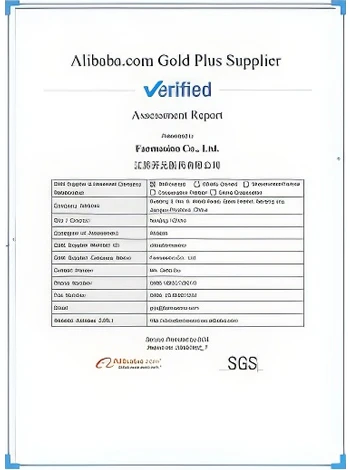



treat algae in pool
Treating Algae in Your Pool A Comprehensive Guide
Keeping a swimming pool clean and inviting is a priority for any pool owner, but one of the most persistent challenges is dealing with algae. These simple, plant-like organisms can quickly turn a sparkling pool into a green or murky mess. In this article, we will explore the causes of algae growth, the types of algae you might encounter, and effective strategies for treating and preventing it.
Understanding Algae Growth
Algae are microscopic organisms that thrive in water, especially in warm conditions. They can grow in any pool environment where the water is not properly balanced or maintained. Factors that contribute to algae growth include
1. Poor Circulation If the pool water isn't circulating effectively, certain areas can become stagnant, creating an ideal environment for algae to flourish.
2. Chemical Imbalance A lack of sufficient chlorine, an improper pH level, or low alkalinity can all encourage algae growth. Algae typically thrive when the chlorine level is below 1 ppm.
3. Warm Temperatures In warmer months, especially in sunny conditions, the growth rate of algae can dramatically increase.
4. Organic Debris Leaves, dirt, and other organic materials can serve as food for algae, providing them with the nutrients they need to thrive.
Types of Algae
There are three main types of algae you may encounter in your pool
1. Green Algae This is the most common type and can appear as a greenish tint in the water or as green spots on pool surfaces. Green algae can spread quickly and may indicate poor water balance.
2. Yellow Algae (Mustard Algae) This type appears as yellow or brown streaks or spots. It is usually more resistant to chlorine and often hides in the pool's corners or crevices, making it harder to treat.
3. Black Algae The most stubborn type, black algae appears as dark spots on pool surfaces and has roots that can penetrate plaster or gunite. This type of algae requires significant effort to remove.
Treatment Strategies
treat algae in pool

If you find algae in your pool, there’s no need to panic. Follow these steps to effectively treat and eliminate the problem
1. Test Water Quality Use a pool test kit to assess the pH level, alkalinity, and chlorine concentration. Aim for a pH between 7.2 and 7.6, and ensure chlorine levels are above 1 ppm.
2. Brush the Pool Physically scrub the walls and floor of the pool with a pool brush appropriate for your pool surface. Pay special attention to areas where algae are visible.
3. Shock the Pool Add a chlorine shock to the pool to significantly raise chlorine levels and kill algae. Follow the manufacturer’s instructions for the correct dosage based on your pool size.
4. Run the Filter Keep your pool filter running continuously for at least 24 hours to help remove dead algae and other debris. It’s also important to clean or backwash the filter as needed.
5. Algaecide Consider applying an algaecide, particularly if dealing with stubborn yellow or black algae. Make sure to choose an algaecide that is compatible with your pool type.
6. Vacuum the Pool Once the algae are dead, use a pool vacuum to clean up the remaining debris and dead algae. Manual vacuums or automatic pool cleaners are both effective.
Prevention
Once you’ve successfully treated your pool, it’s vital to implement preventative measures to keep algae from returning
1. Regular Maintenance Check and balance your pool water weekly. Keep an eye on chlorine levels, pH, and alkalinity.
2. Proper Circulation Ensure that your pool pump and filter are functioning well and running for an adequate amount of time each day.
3. Routine Cleaning Regularly brush and vacuum the pool, remove debris, and clean skimmer and pump baskets.
4. Use Pool Covers When the pool is not in use, consider covering it to prevent debris accumulation and reduce sunlight, both of which can encourage algae growth.
In conclusion, maintaining a clean and clear pool requires vigilance, especially when it comes to combating algae. By understanding the causes of algae growth, implementing effective treatment strategies, and adopting preventive measures, you can ensure that your pool remains a refreshing oasis for you and your family. Regular maintenance and attention to water chemistry will not only enhance your swimming experience but also prolong the life of your pool.
-
Why Strontium Carbonate Still MattersNewsJun.06,2025
-
Why BaSO4 MattersNewsJun.06,2025
-
Why Barium Carbonate Still MattersNewsJun.06,2025
-
Strontium Hydroxide: A Versatile Compound for Modern ApplicationsNewsJun.06,2025
-
Strontium Chloride in Daily IndustryNewsJun.06,2025
-
Pure Potassium Nitrate for SaleNewsJun.06,2025
-
What Is Sodium Bisulfate Used For?NewsMay.15,2025










